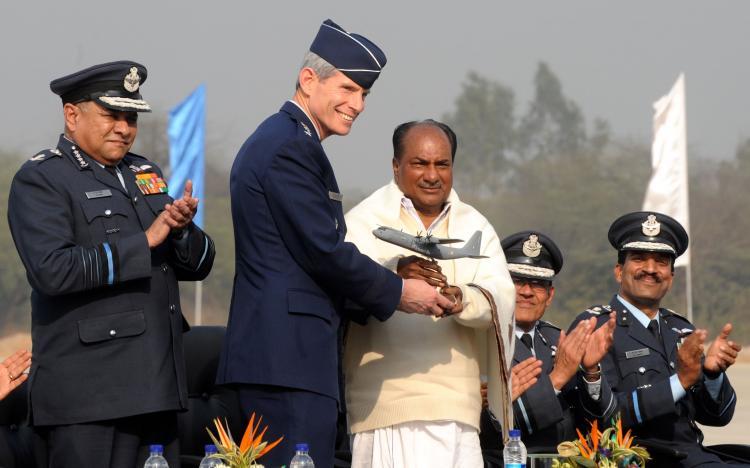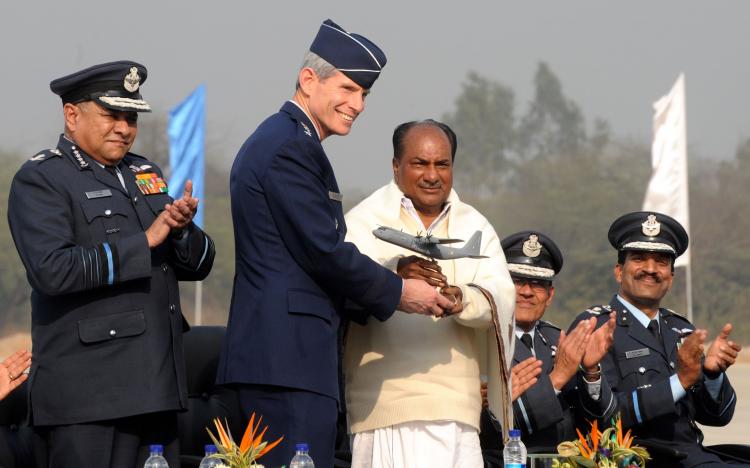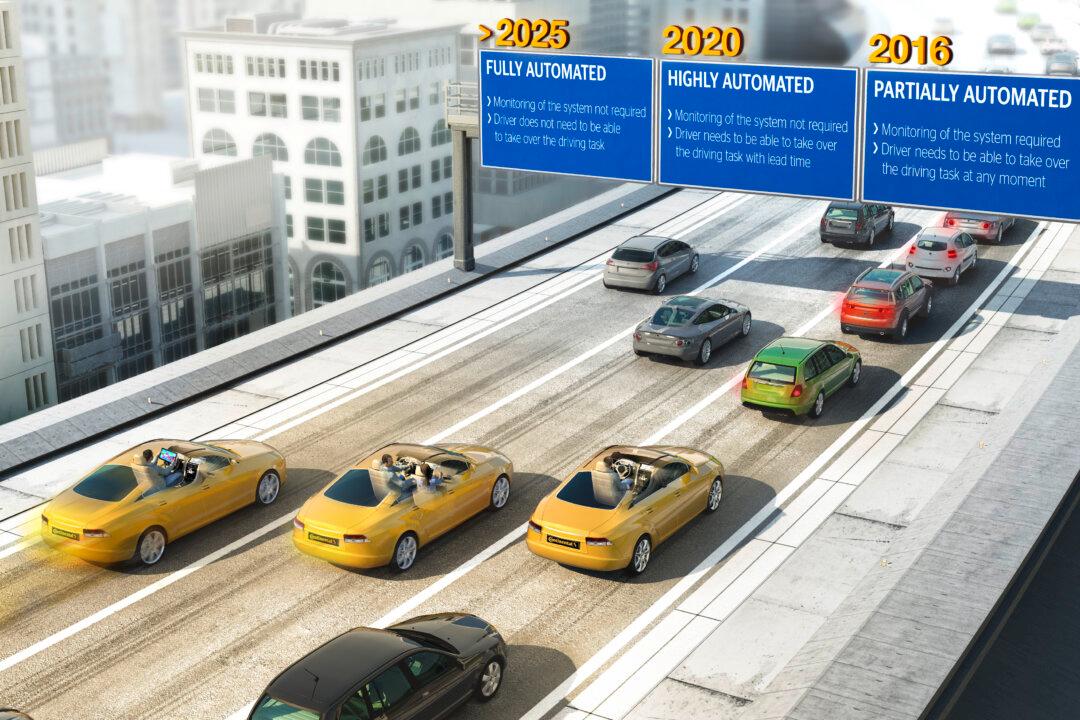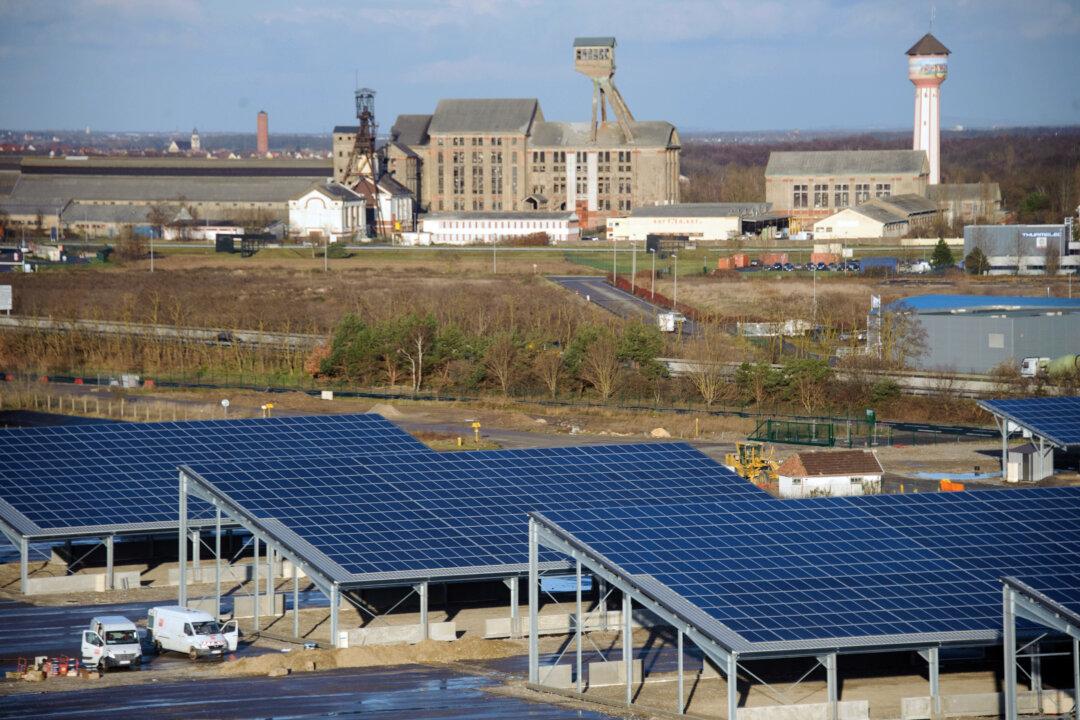WASHINGTON—India has it all: the world’s most populous democracy, a trade-friendly prime minister, a steady 8 to 9 percent growth rate, and a willingness to step up and work with the United States on geopolitics in the region. The question is whether it will choose to partner with the United States in a big way, or not.
These synergies, along with 220 million rising middle-class consumers, means the U.S.-India business relationship should be booming.
In a sense it is booming. U.S. exports to India quadrupled between 2002 and 2009, and diplomatic relations between the two countries have never been better.
If only the democratic giant would make a few more policy adjustments, the U.S.-India business relationship could skyrocket, was the message from Ron Somers, president of the U.S.-India Business Council at the American Enterprise Institute (AEI) on March 14.
If India chooses to fully integrate with the United States, business ties would assist a crucial geopolitical partnership, and vice versa. Everyone would benefit, he said.
The single most important relationship right now is defense, said Somers.
Boeing and Lockheed Martin are in the running for a contract worth $11 billion to build 126 fighter aircraft for the Indian air force. It is the single largest defense procurement in the world. The U.S. firms are competing with four European bidders.
Somers is confident one of the U.S. companies will win the contract, because the aircraft purchase is about the strength of a U.S. strategic relationship with India. The purchase would involve long-term supply of spare parts, training, and inter-operability capability between air forces, said Somers.
Somers said he believes the single best way for the United States to strengthen its relationship with India is through the military. India’s choice to go with a U.S. firm would really be an “alignment of our two defense departments for the 21st century,” he said.
India expert Ashley Tellis, with the Carnegie Endowment for International Peace, confirmed that India needs help in this department.
India must rely on other countries, predominantly the United States, to maintain peace—and, by extension—its way of life, he said.
Tellis said the country is still too weak to handle national security matters on its own.
India needs the help because it faces threats in the region from surrounding Arab countries. Pakistan poses the largest immediate threat, and China’s rising power and aggression in the region is also a concern.
“To be able to sustain a democratic experiment in the midst of these relatively unfavorable conditions is something that India values,” said Tellis.
The United States has a strategic interest in a peaceful and democratic India. It is in U.S. interests to secure geopolitical balance and open access to markets throughout the region, and India is a key partner in this endeavor.
Despite these common goals, American scholars and business leaders are not counting on success without a lot of effort. There is doubt whether ties between the two countries will strengthen as some have envisioned.
“Because India marches to the beat of its own drum, this relationship will have to be actively managed,” said Tellis.
U.S.-India relations improved greatly in 2008, when former President George W. Bush and Prime Minister Singh completed a civil nuclear agreement in 2008. The deal allowed India to purchase nuclear fuel and technology from the United States.
India, forced by a lack of natural endowment to purchase 80 percent of its fuel from outside its borders, is investing heavily in nuclear power generation. Somers sees a great opportunity for the United States to export nuclear generation capability to India, but the relationship still needs agreement on liability in the event of a nuclear accident.
“This issue is critically important before our companies, GE or Babcock Wilcox, or the Shaw Group, or Westinghouse can begin in earnest in trading in civil nuclear cooperation with India,” said Somers.
Somers also sees huge potential for U.S. companies should India decide to allow big box retailers to operate in the country.
The decision would ultimately transform Indian society, he said. As companies like Wal-Mart invest in infrastructure and modernization of the country’s food production, millions of family farms, and a way of life, would be superseded by mechanized production. On the upside, working children could be freed to attend schools.
While India’s middle class provides a skilled labor force and an attractive consumer market, the numbers represent only a small portion of the country’s 1.2 billion people.
According to Nicholas Eberstadt, a political economist and demographer with AEI, one-third of the current working age population of India has never been to school. Based on current projections, 20 years from now, that number will still be one-fifth of the population.
Part of the problem is the country’s underdeveloped education infrastructure, which resulted from policy decisions made 20 years ago to focus on tertiary education.
“India is about 50 years behind China in the quest to eliminate illiteracy,” said Eberstadt.
Somers sees opportunities for U.S. companies to build and provide private education. Again, he hopes legislation from the Indian Congress will open the door.
“India has 150 major universities, and they need 1,500. India has 3,000 colleges, and they need 30,000 colleges. And the price tag on that alone is about $45 billion dollars, and that is just the brick and mortar piece,” said Somers.
“It is an area where the United States and India have a special synergy,” he said.
Ultimately, Somers would like the United States to negotiate a comprehensive economic and trade partnership with India. The idea was first introduced by Indian Minister of Commerce and Industry Anand Sharma, after President Barack Obama’s visit to the country last year.
Somers said it would be “the Mount Everest of agreements to climb,” but worth the effort. India will need an estimated $1.7 trillion in infrastructure over the next five years.
These synergies, along with 220 million rising middle-class consumers, means the U.S.-India business relationship should be booming.
In a sense it is booming. U.S. exports to India quadrupled between 2002 and 2009, and diplomatic relations between the two countries have never been better.
If only the democratic giant would make a few more policy adjustments, the U.S.-India business relationship could skyrocket, was the message from Ron Somers, president of the U.S.-India Business Council at the American Enterprise Institute (AEI) on March 14.
If India chooses to fully integrate with the United States, business ties would assist a crucial geopolitical partnership, and vice versa. Everyone would benefit, he said.
The single most important relationship right now is defense, said Somers.
Boeing and Lockheed Martin are in the running for a contract worth $11 billion to build 126 fighter aircraft for the Indian air force. It is the single largest defense procurement in the world. The U.S. firms are competing with four European bidders.
Somers is confident one of the U.S. companies will win the contract, because the aircraft purchase is about the strength of a U.S. strategic relationship with India. The purchase would involve long-term supply of spare parts, training, and inter-operability capability between air forces, said Somers.
Somers said he believes the single best way for the United States to strengthen its relationship with India is through the military. India’s choice to go with a U.S. firm would really be an “alignment of our two defense departments for the 21st century,” he said.
India expert Ashley Tellis, with the Carnegie Endowment for International Peace, confirmed that India needs help in this department.
India must rely on other countries, predominantly the United States, to maintain peace—and, by extension—its way of life, he said.
Tellis said the country is still too weak to handle national security matters on its own.
India needs the help because it faces threats in the region from surrounding Arab countries. Pakistan poses the largest immediate threat, and China’s rising power and aggression in the region is also a concern.
“To be able to sustain a democratic experiment in the midst of these relatively unfavorable conditions is something that India values,” said Tellis.
The United States has a strategic interest in a peaceful and democratic India. It is in U.S. interests to secure geopolitical balance and open access to markets throughout the region, and India is a key partner in this endeavor.
Despite these common goals, American scholars and business leaders are not counting on success without a lot of effort. There is doubt whether ties between the two countries will strengthen as some have envisioned.
“Because India marches to the beat of its own drum, this relationship will have to be actively managed,” said Tellis.
Economic Potential
U.S.-India relations improved greatly in 2008, when former President George W. Bush and Prime Minister Singh completed a civil nuclear agreement in 2008. The deal allowed India to purchase nuclear fuel and technology from the United States.
India, forced by a lack of natural endowment to purchase 80 percent of its fuel from outside its borders, is investing heavily in nuclear power generation. Somers sees a great opportunity for the United States to export nuclear generation capability to India, but the relationship still needs agreement on liability in the event of a nuclear accident.
“This issue is critically important before our companies, GE or Babcock Wilcox, or the Shaw Group, or Westinghouse can begin in earnest in trading in civil nuclear cooperation with India,” said Somers.
Somers also sees huge potential for U.S. companies should India decide to allow big box retailers to operate in the country.
The decision would ultimately transform Indian society, he said. As companies like Wal-Mart invest in infrastructure and modernization of the country’s food production, millions of family farms, and a way of life, would be superseded by mechanized production. On the upside, working children could be freed to attend schools.
While India’s middle class provides a skilled labor force and an attractive consumer market, the numbers represent only a small portion of the country’s 1.2 billion people.
According to Nicholas Eberstadt, a political economist and demographer with AEI, one-third of the current working age population of India has never been to school. Based on current projections, 20 years from now, that number will still be one-fifth of the population.
Part of the problem is the country’s underdeveloped education infrastructure, which resulted from policy decisions made 20 years ago to focus on tertiary education.
“India is about 50 years behind China in the quest to eliminate illiteracy,” said Eberstadt.
Somers sees opportunities for U.S. companies to build and provide private education. Again, he hopes legislation from the Indian Congress will open the door.
“India has 150 major universities, and they need 1,500. India has 3,000 colleges, and they need 30,000 colleges. And the price tag on that alone is about $45 billion dollars, and that is just the brick and mortar piece,” said Somers.
“It is an area where the United States and India have a special synergy,” he said.
Ultimately, Somers would like the United States to negotiate a comprehensive economic and trade partnership with India. The idea was first introduced by Indian Minister of Commerce and Industry Anand Sharma, after President Barack Obama’s visit to the country last year.
Somers said it would be “the Mount Everest of agreements to climb,” but worth the effort. India will need an estimated $1.7 trillion in infrastructure over the next five years.






